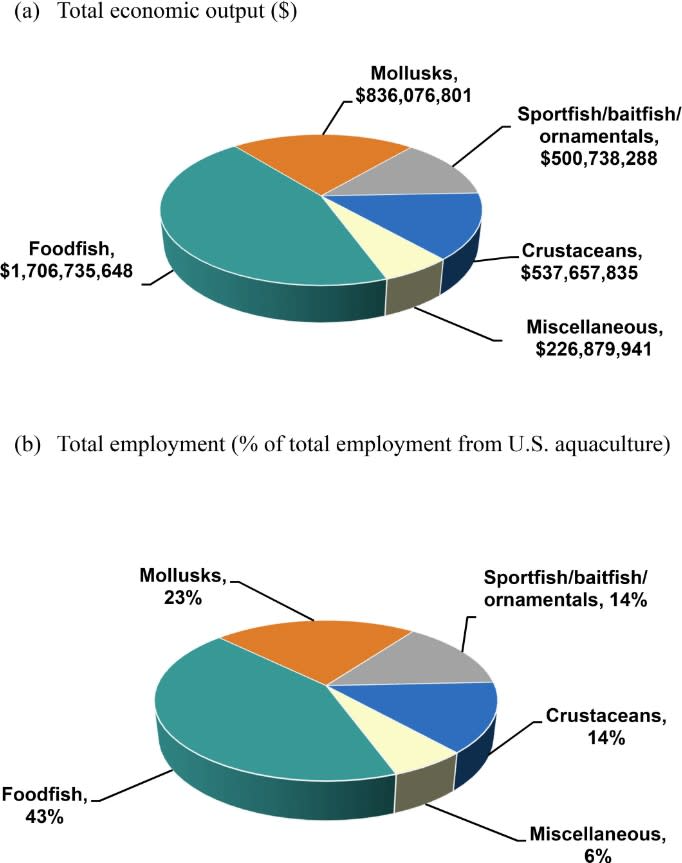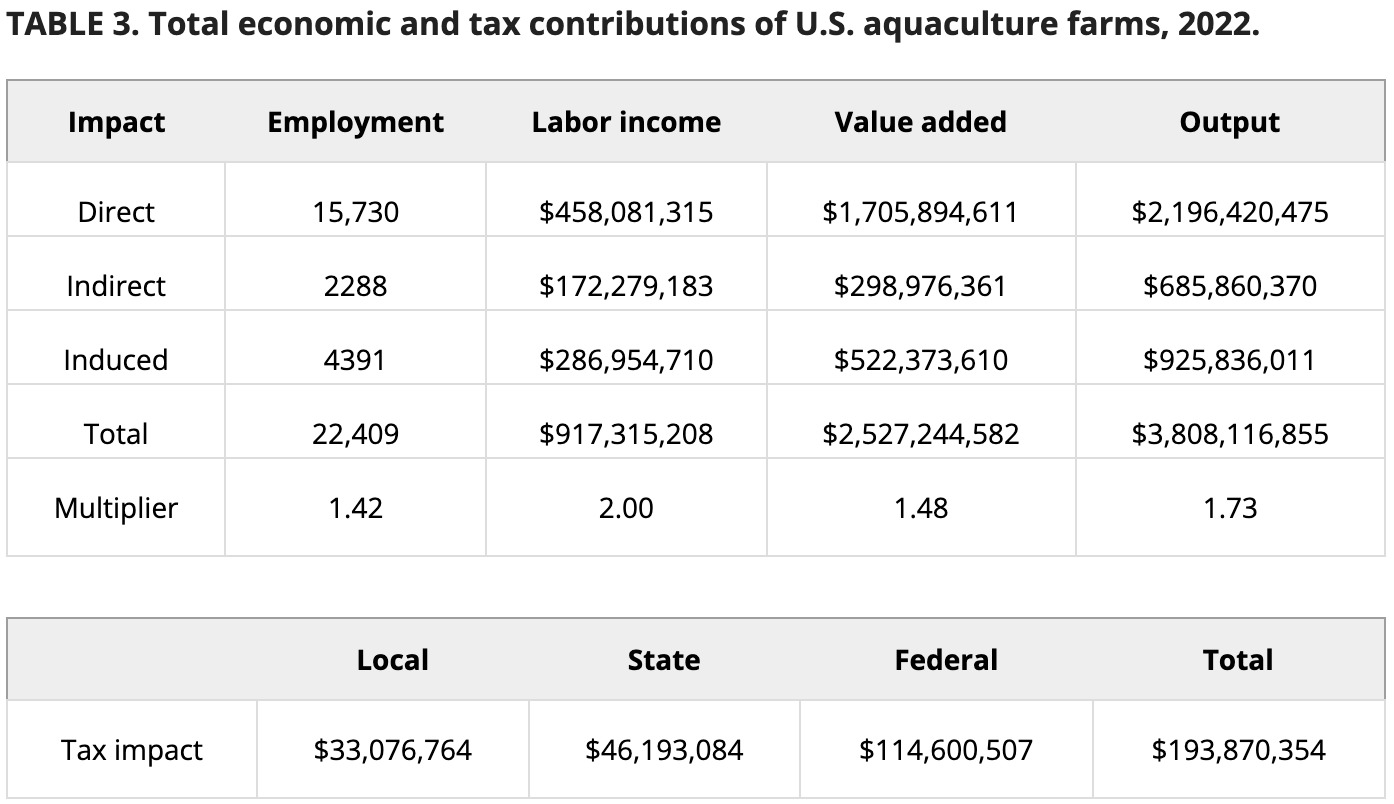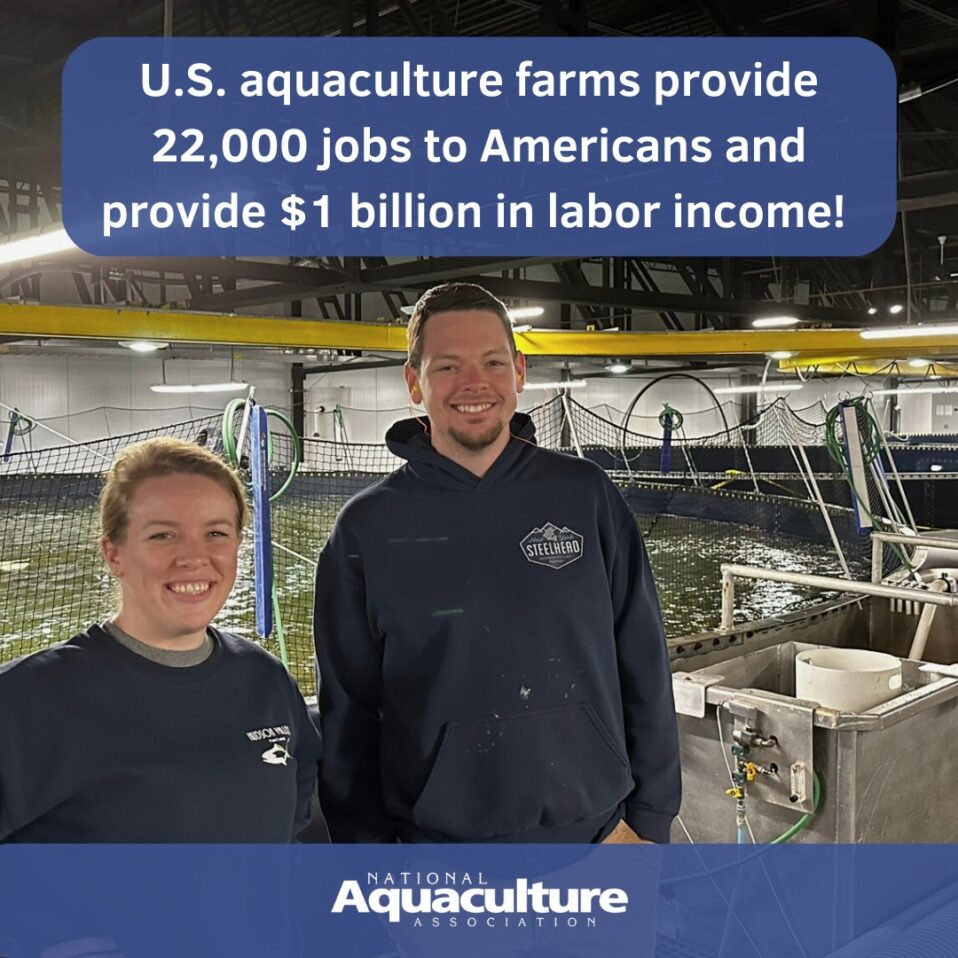Courtesy of NAA:
A distinguished team of economists familiar with U.S. aquaculture have published an analysis funded by the National Sea Grant Program estimating the economic impact of U.S. aquaculture to the economy. The analysis achieves its goal and presents a succinct description of U.S. aquaculture capturing the complexity in the life stages of aquatic animals and plants farmed and production systems used by small and large farms across the nation.
The total economic contribution of U.S. aquaculture production was estimated to be $4 billion annually with more than 22,000 jobs supported each year. The labor income and value addition were approximately $1 billion and $3 billion, respectively. The economic output multiplier across all U.S. aquaculture production was 1.73. Nearly all (96%) economic sectors in the United States were supported by U.S. aquaculture, with the majority of this contribution occurring in the rural economies where most aquaculture farms are located.


However, the study revealed, through a series of regulatory cost studies, the regulatory framework in the United States has resulted in loss of access to markets, lost business opportunities, and thwarted attempts to expand farming businesses to meet demand for U.S. aquaculture products. Total lost revenue, adjusted for coverage across the U.S. was $507 million in foregone direct economic output from U.S. aquaculture. Utilizing the 1.73 multiplier, the foregone economic contribution of U.S. aquaculture is $877 million with more than 3,629 jobs estimated to have been foregone as a result of regulatory constraints alone on U.S. aquaculture.
Economics is the study of the allocation of scarce resources to meet human wants and needs and has a critical role to play in addressing challenges related to environmental sustainability, community resilience, and food security. In the context of aquaculture, the key to such a discussion is understanding the linkages of aquaculture farming businesses with other economic sectors and how policy decisions that affect aquaculture result in economic ripples throughout local, regional, and national economies.
The only previous national estimates of the economic contributions of U.S. aquaculture are nearly 30 years old. The current study was based on comprehensive data from detailed farm-level surveys (that captured 77% of the total value of U.S. aquaculture) supplemented by information from publications on the remaining aquaculture sectors. The economic contributions measured in this study were limited to those at the farm level and do not include subsequent impacts that occur as farmed products move through processing, distribution, food service, and retail sectors in the U.S. economy.
Analysis of the linkages of U.S. aquaculture production activities with other economic sectors showed that nearly all (96%) economic sectors were supported to some degree by U.S. aquaculture farms. Foodfish farms generated the greatest contributions, followed by mollusk farms. Freshwater aquaculture farms contributed twice that of the contributions of marine aquaculture because of the greater size of the freshwater aquaculture sector. Growth of both freshwater and marine sectors would increase overall contributions to the economy.
Constraints to growth of aquaculture include regulatory barriers that have restricted existing sectors from meeting current demand for their products. A complex, costly and time-consuming regulatory framework and the lack of a Congressionally authorized property right for offshore marine aquaculture has constrained its growth and development, especially with respect to the rest of the world. Agency review and approvals implemented in a more timely and efficient manner could result in substantially greater economic contributions from existing U.S. aquaculture farms.
The total economic impact of U.S. aquaculture production is likely three to four times greater than the farm-level impacts estimated in this study as a result of impacts that occur as aquaculture products move downstream through various marketing channels. Additional research is needed to measure the impacts of U.S. aquaculture products in the processing, distribution, food service, supermarket, and restaurant levels of the marketing chain to fully capture the total economic contributions from U.S. aquaculture.
To read or download the analysis, click here.



Recent Comments